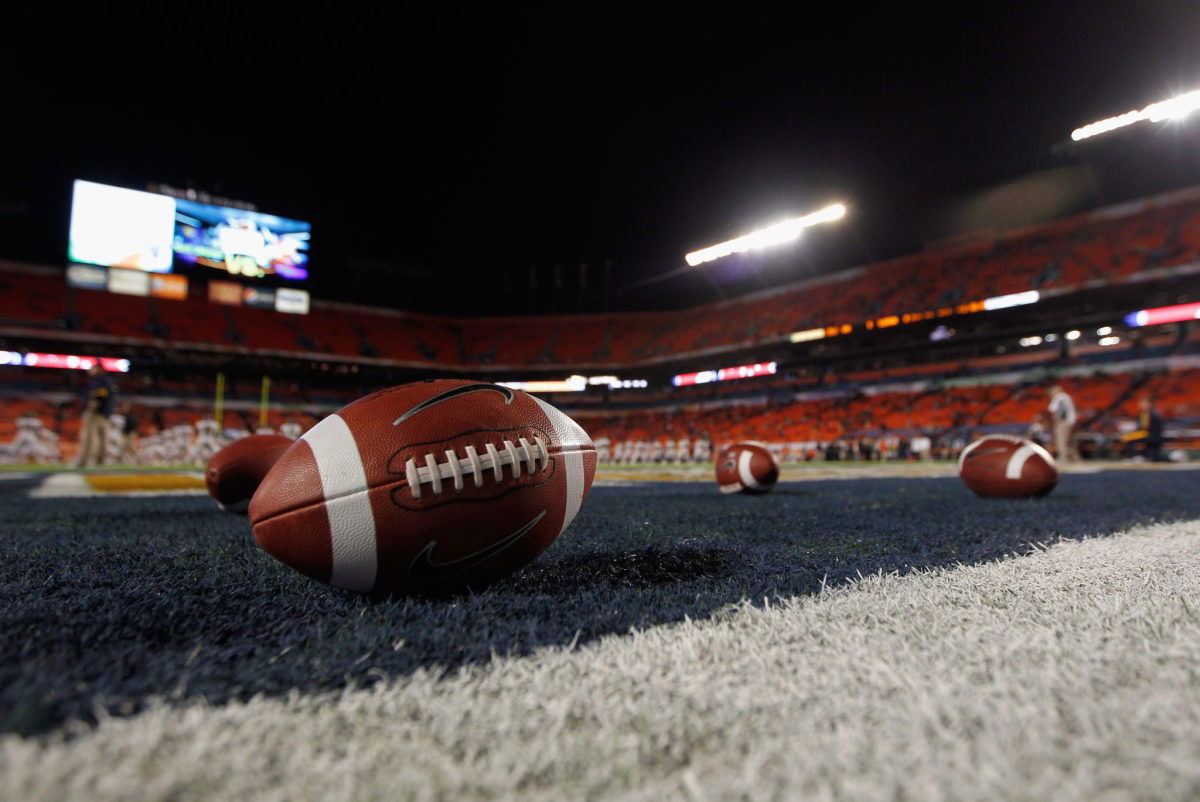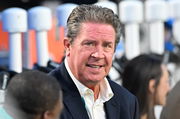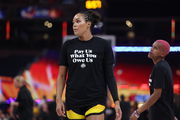

“All the things that I believed in for all these years—50 years of coaching—no longer exist in college athletics,” Nick Saban said, and that couldn’t be more true. This June 6th marks a new era in college football. While many players are leaving through the transfer portal, college football fans are now focused on the House vs. NCAA settlement. And a big part of this settlement is revenue sharing.
Watch What’s Trending Now!
On June 6, a federal judge officially approved a settlement for three cases related to paying college athletes. This decision is a huge step in ending old amateurism rules in college sports. It means that money will now come directly from athletic departments. The NCAA will also pay nearly $2.8 billion in past damages over the next 10 years to athletes who played in college from 2016 until now.
Looking ahead, each school will be able to pay its athletes up to a certain limit. This annual cap is expected to start at about $20.5 million per school for the 2025-26 year and will go up each year during the 10-year deal. These new payments are on top of scholarships and other benefits that athletes already get.
ADVERTISEMENT
As approved by U.S. District Judge Claudia Wilken in Oakland, California, NCAA programs are now free to pay their athletes for using their Name, Image, and Likeness (NIL), and this will apply to all sports. So, where is all this money going?
Analyst Adam Breneman shared his thoughts on his podcast on June 6. Under the new system, top football programs are expected to give about 75% of future revenue to football players. Men’s basketball will get 15%, women’s basketball 5%, and all other sports will share the remaining 5%. Some schools might even give over 85% of their salary pool to football players by matching what each sport usually earns.
Breneman said, “With revenue sharing coming, I would expect that about $15 million of that money goes to football. And then you have still outside of the school, have commercial NIL deals outside of the school. So you’re still gonna have Phil Knight at Oregon, being able to pay the players what he wants.”
ADVERTISEMENT
Breneman also added, “And on top of that, I’d say another $10 million, probably the big-time programs are gonna want to pay their players. The doubling up between revenue sharing money and then the outside of the cap, NIL, true NIL money, that’s gonna end up with the players as well.”
View this post on Instagram
ADVERTISEMENT
For some NCAA schools, the revenue sharing has been a blessing in disguise. Wealthy schools with strong booster networks, like Oregon, ft. the ex-Nike CEO Phil Knight, will have a huge advantage. They can double-dip, offering big revenue-sharing packages and lucrative NIL deals. Now, what about the ones that land in the tough spot?
While it’s big news for blue-blood schools, two programs are already losing their sleep….
ADVERTISEMENT
Programs that are drowning in the House vs. NCAA revenue sharing model’s disparity
The House v. NCAA settlement primarily involves the Power Four conferences (Big Ten, SEC, Big 12, and ACC) and FBS-level football programs. Unfortunately, North Dakota State Bison belongs to the FCS, a lower division in the NCAA hierarchy of schools. That means they have far less media exposure. Plus, the revenue-sharing model is based on distributing a percentage of major athletics revenue, something FCS schools don’t generate at the same level. The only thing they can offer is the NDSU Graduating Champions Fund, which was made possible by a 2021 U.S. Supreme Court ruling in NCAA v. Alston.
NDSU continues to fully fund athletic scholarships to NCAA maximum limits in all men’s and women’s sports. For that, they have the Graduating Champions Award. At the same time, the NIL opportunities are taken care of by the NDSU Exchange and The Green and The Gold Collective. However, their smaller financial footprint, having an FCS status, will cripple them from making the most of the revenue-sharing model. North Dakota State is not the only one in the unlucky tribe.
Top Stories
Fact Check: Were Greg Biffle & Family On the Plane That Crashed At Statesville, North Carolina?

Carlos Alcaraz’s Split With Coach Resulted From ‘Major Disagreements’ With His Father

“Rest in Peace”: Prayers Pour In From Dan Marino as Dolphins Legend Mourns Tragedy in South Florida Football

Who Is Greg Biffle’s Wife? Everything You Need to Know About Cristina Grossu

WNBA Responds to WNBPA Strike Authorization Vote With Official Statement

Footage Surfaces of Florida Police Arresting NASCAR Veteran Over Disturbing Public Misbehavior

They are joined by the Georgia State Panthers, who are a member of the Sun Belt Conference, which is a Group of Five (G5) conference. In light of the powerful NCAA football programs like Alabama and Georgia, they have a smaller football budget and lower TV/media exposure. While Georgia State athletes benefit from NIL via the All Blue All NIL collective, the football program is not part of the revenue-sharing framework.
ADVERTISEMENT
While many top Division 1 teams can afford these changes, programs like NDSU and Georgia State already have small scholarship budgets and will struggle. This new settlement will hurt their recruiting and make it nearly impossible to build a championship roster. So, while teams like Oregon swim in NIL riches and Ohio State flaunts a $20 million roster, NDSU and Georgia State are stuck trying to keep their heads above water.
ADVERTISEMENT
ADVERTISEMENT
ADVERTISEMENT

